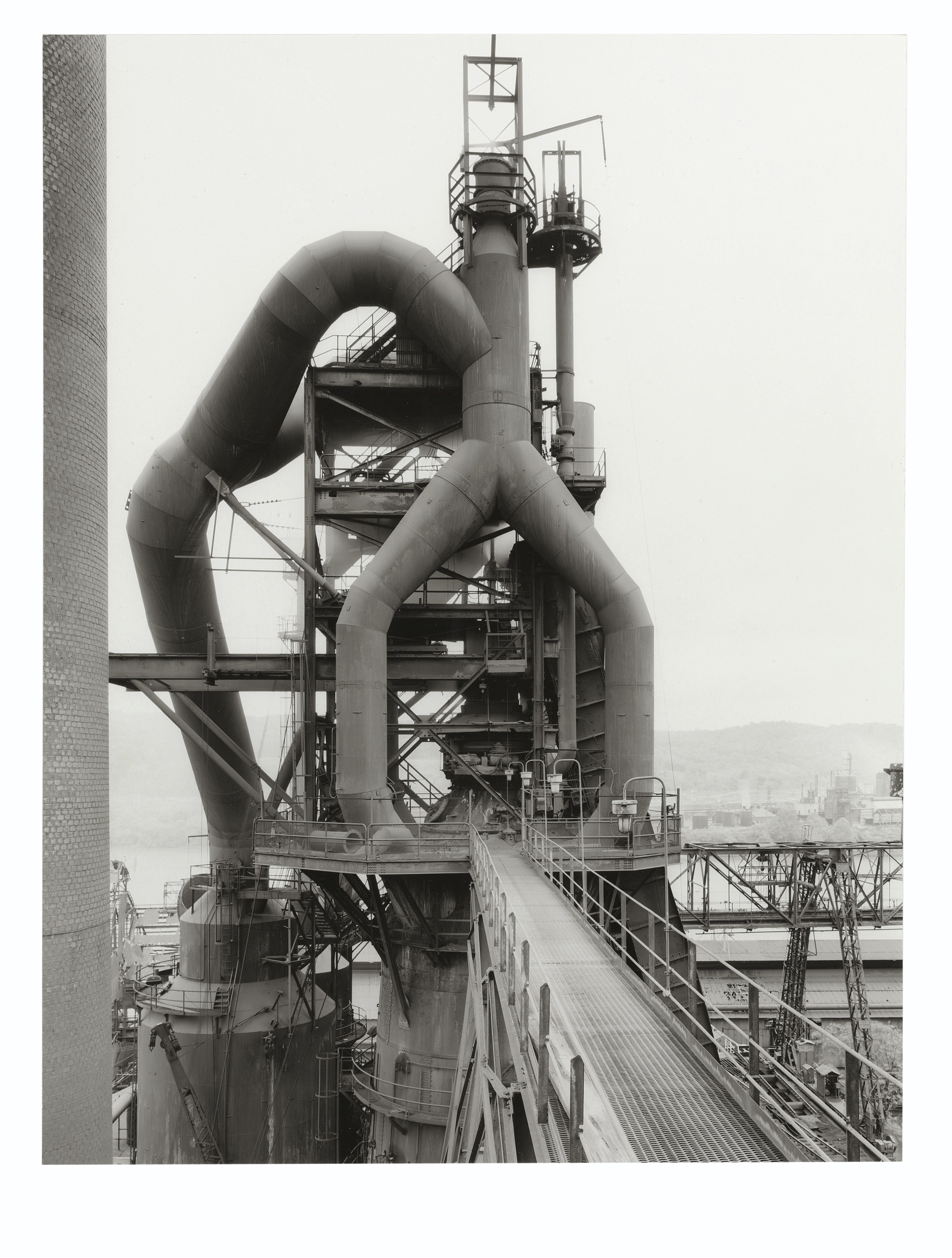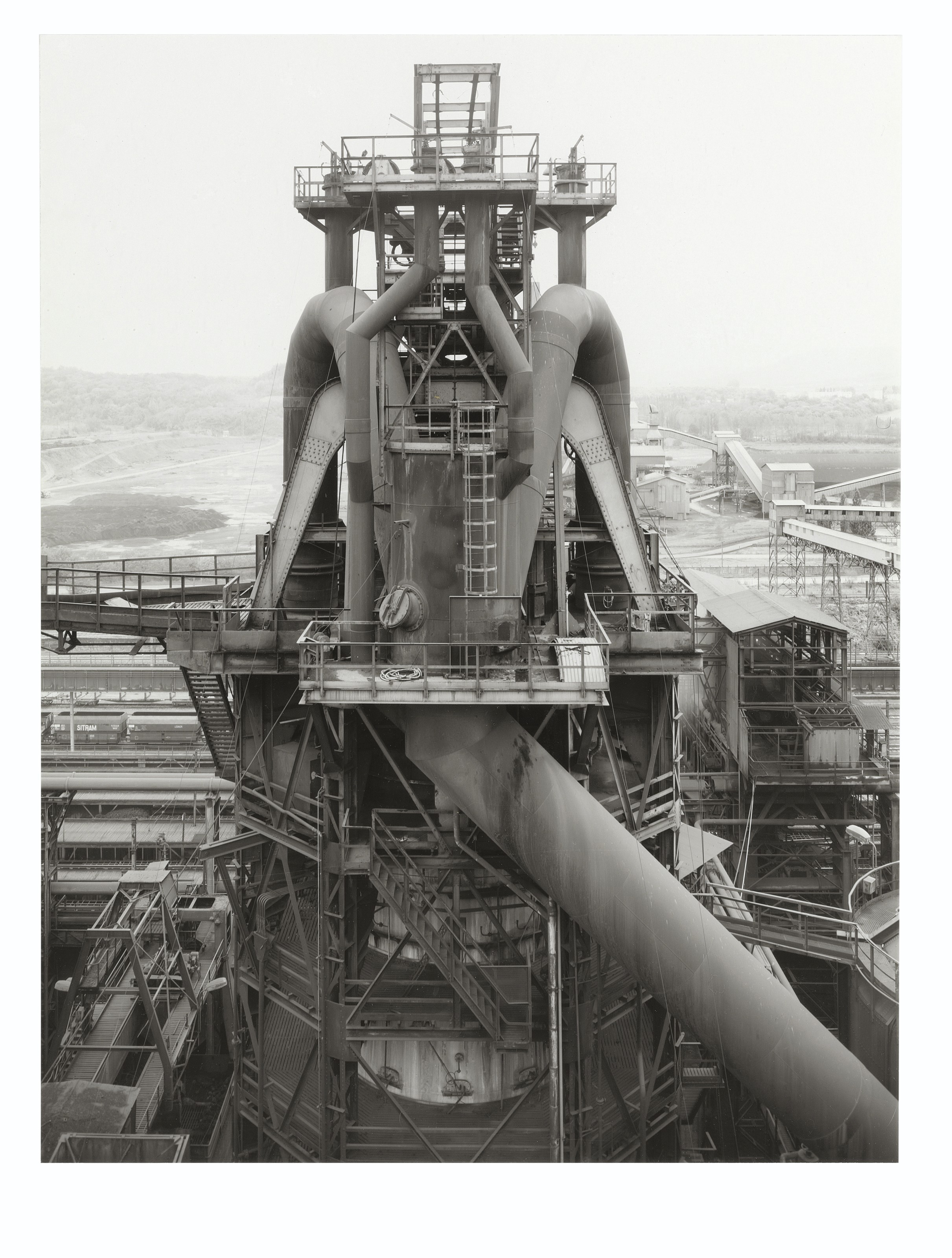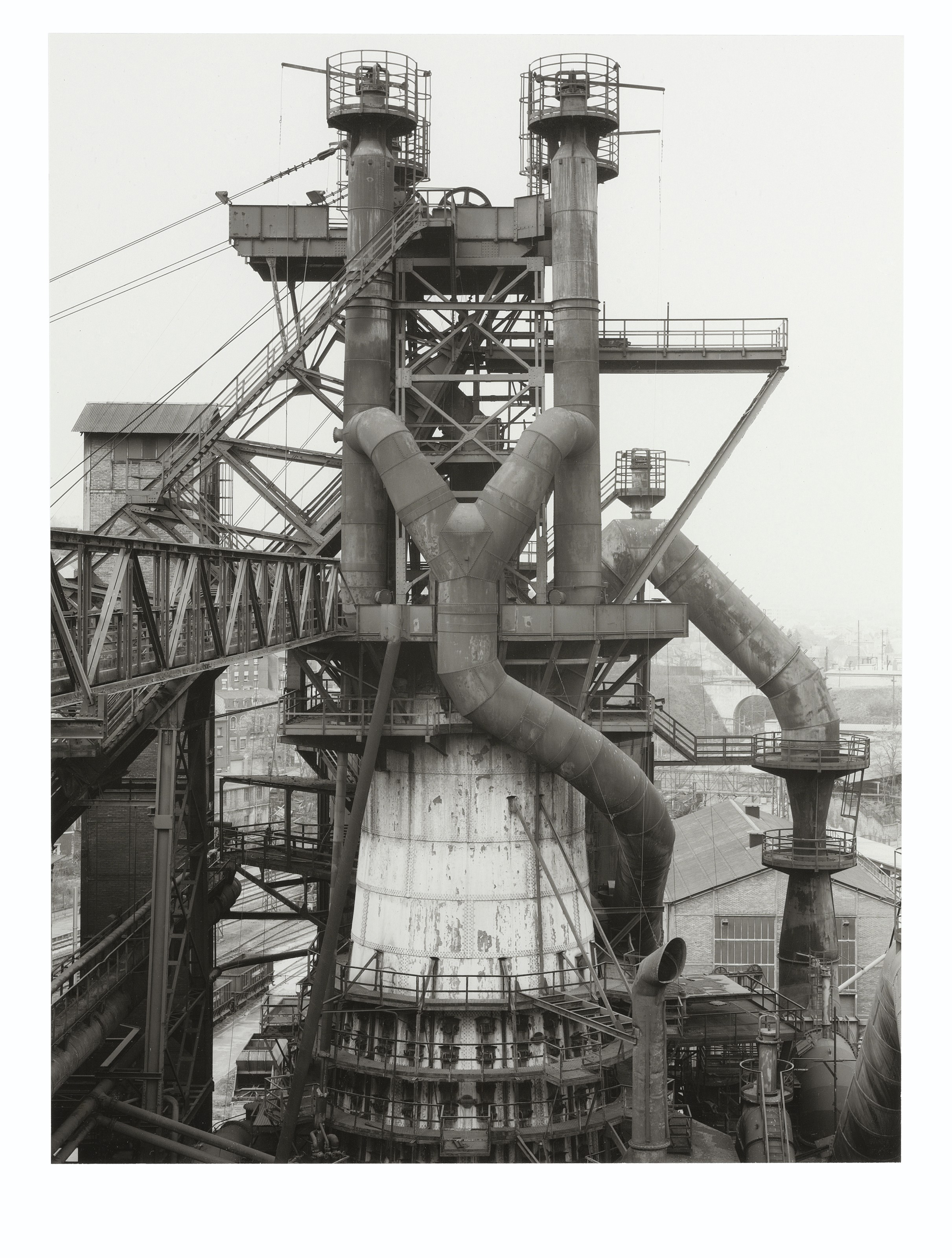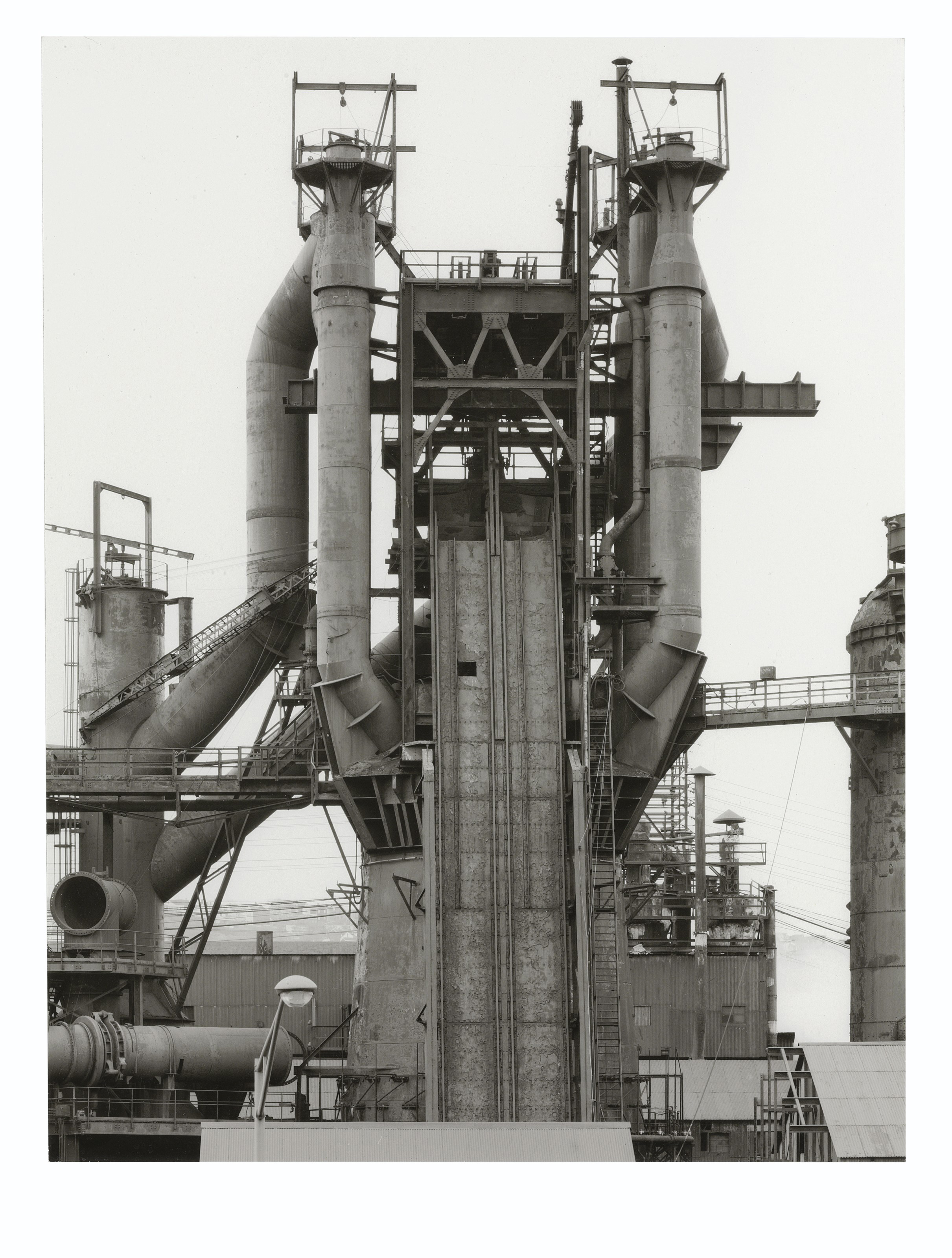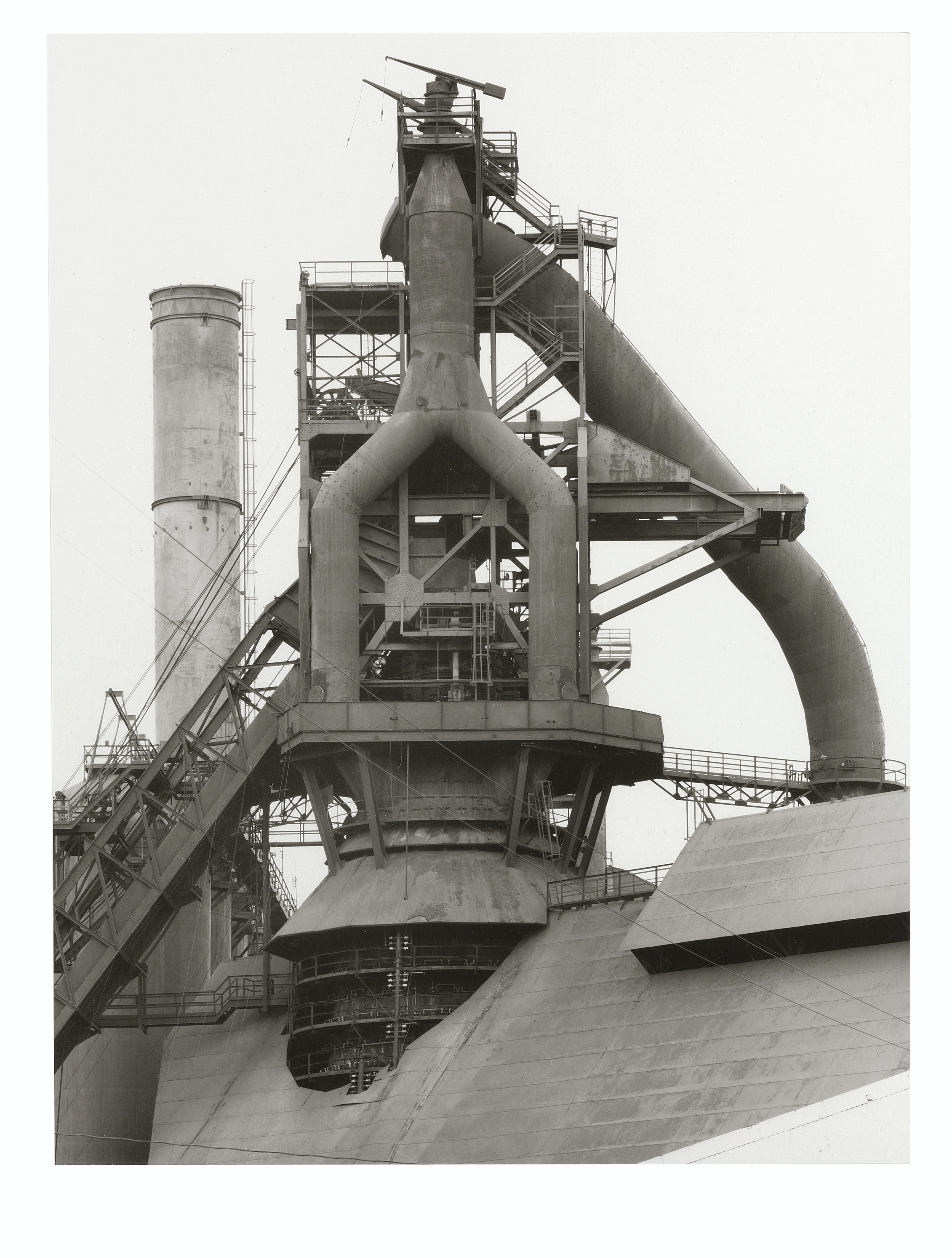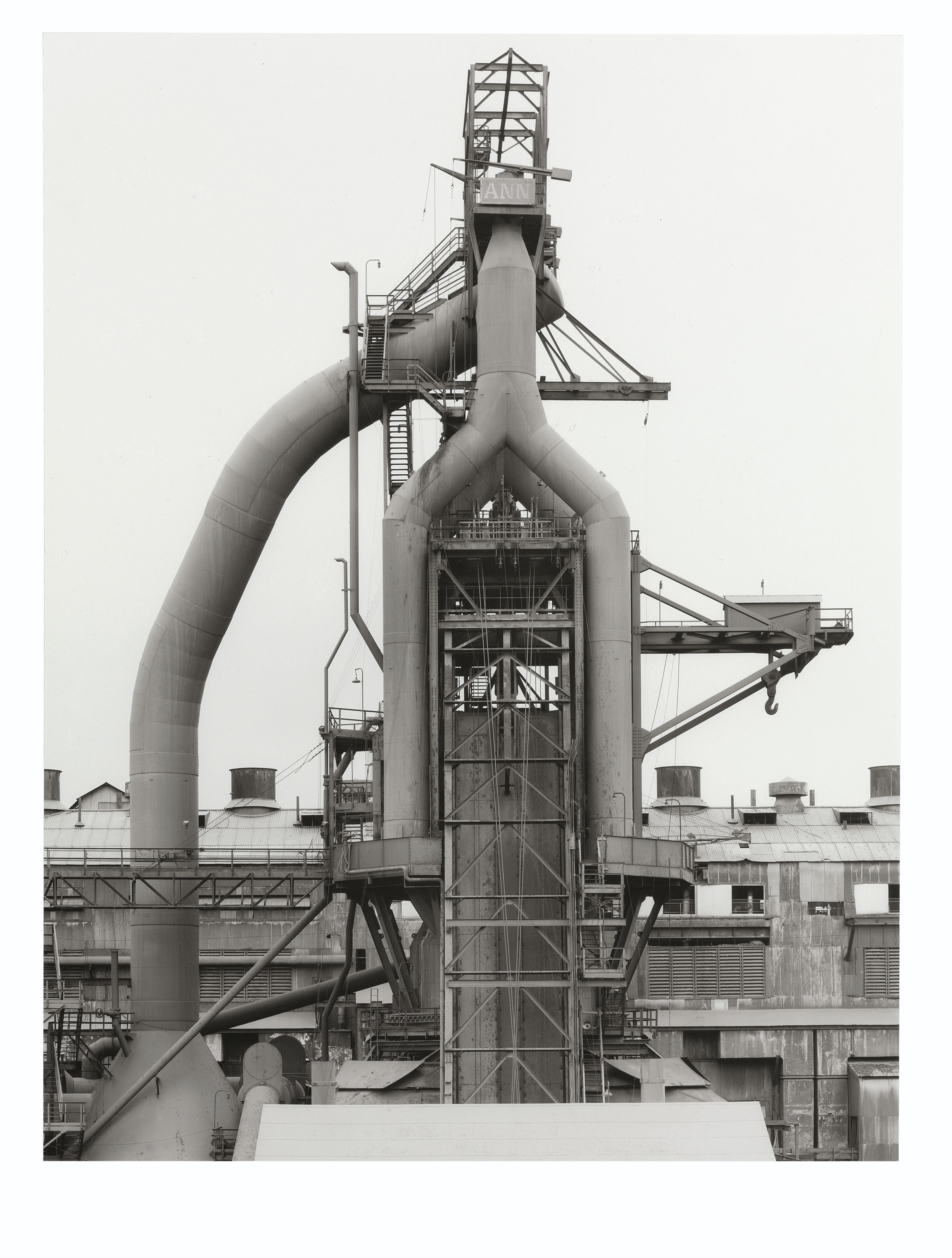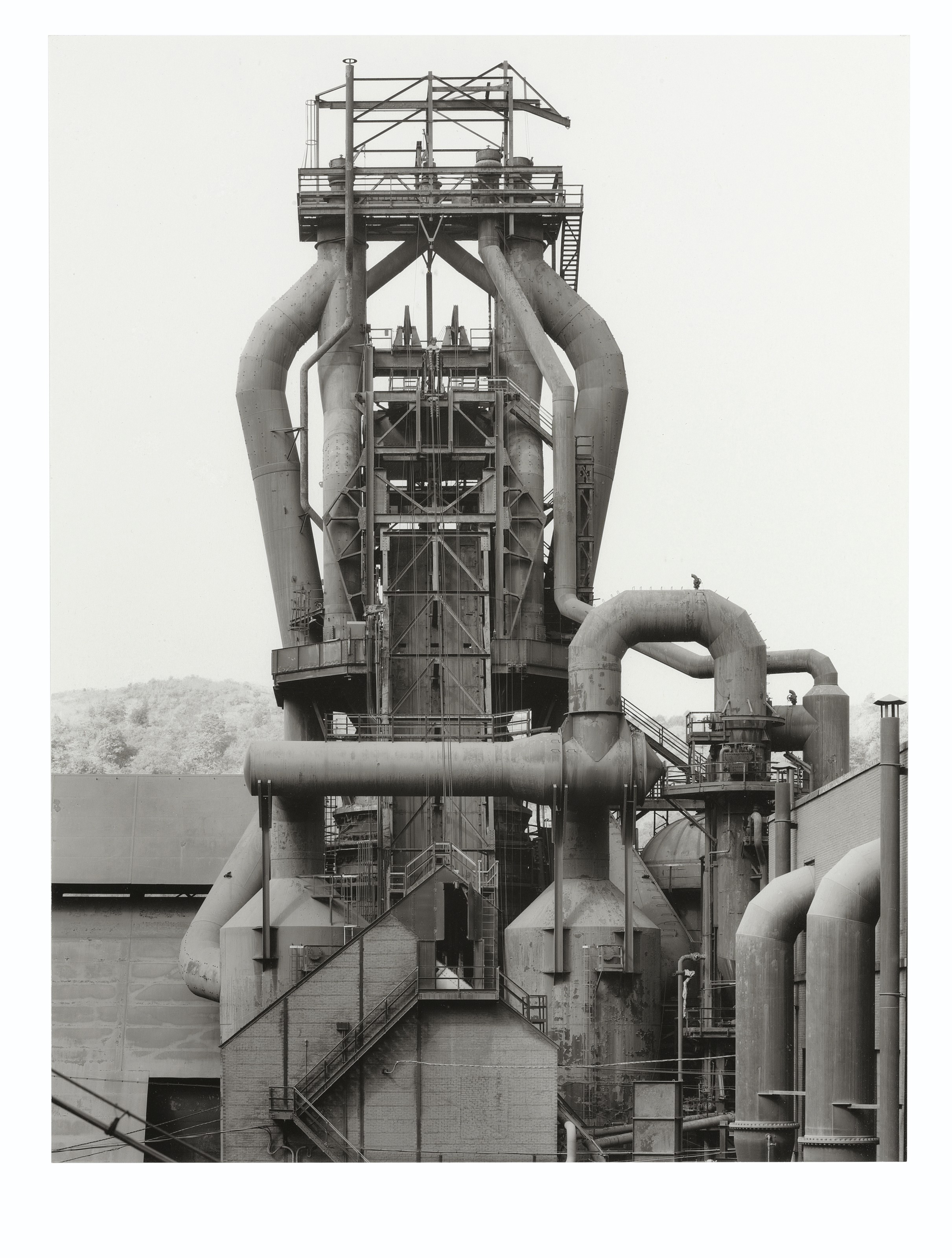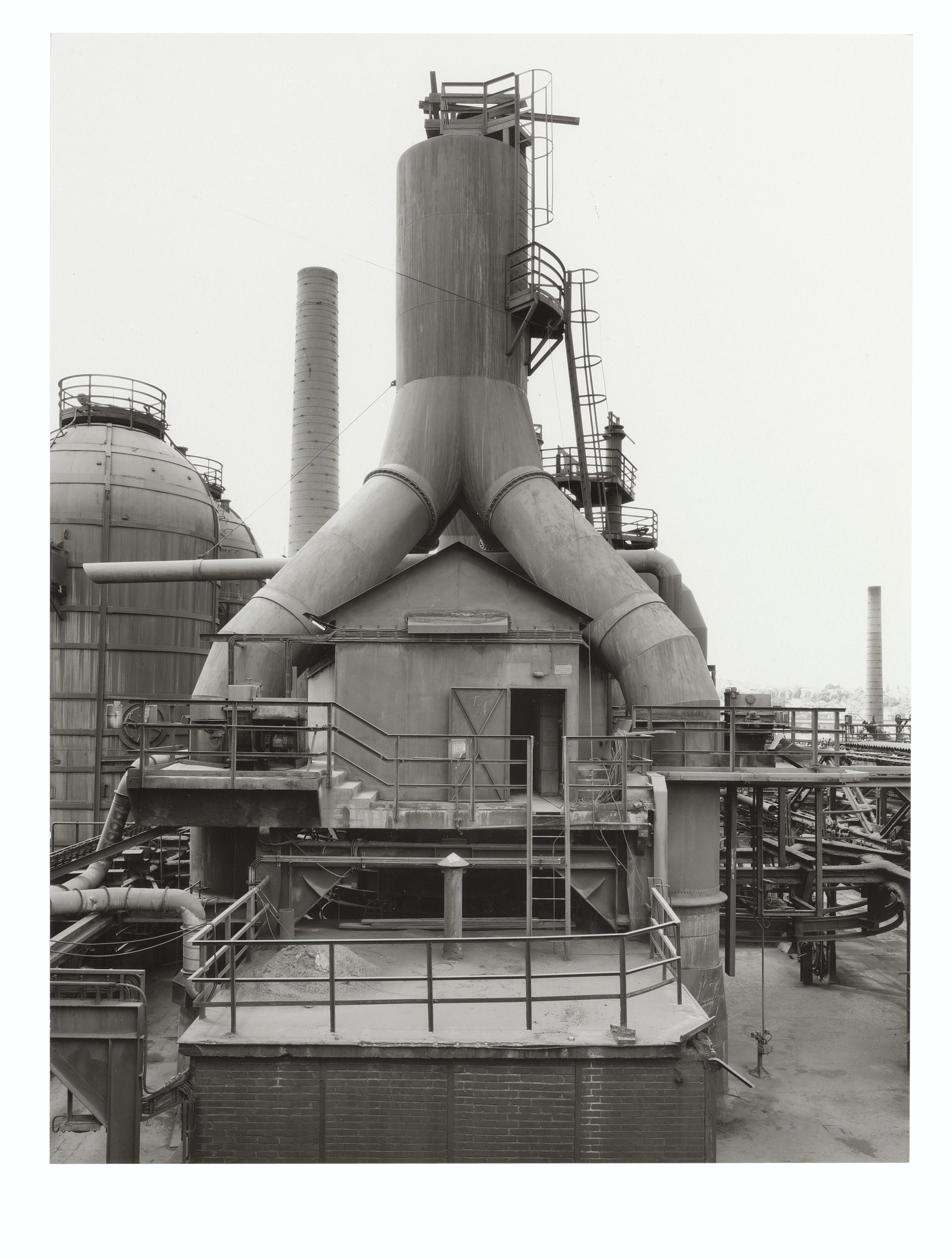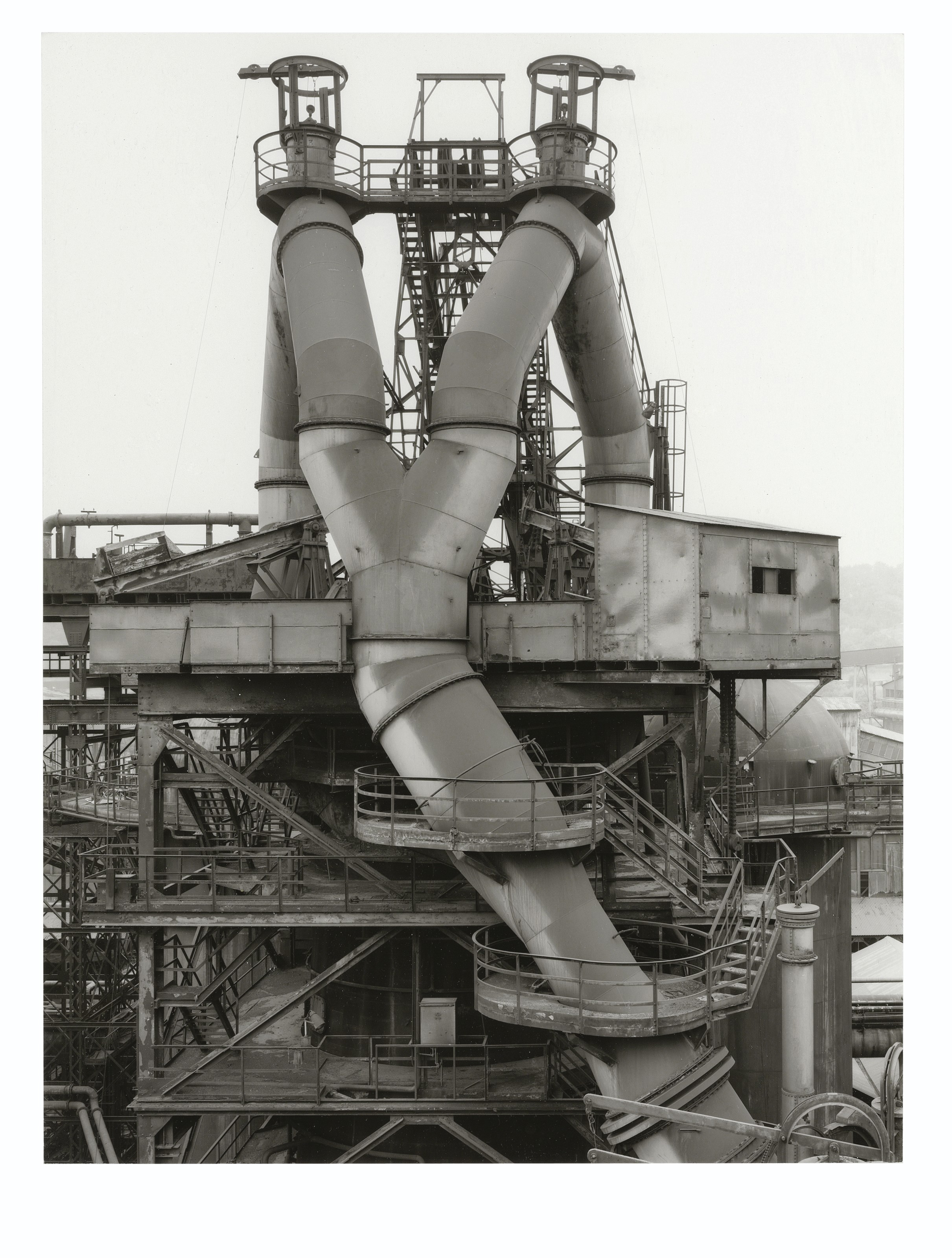Bernd Becher & Hilla Becher
Blast Furnaces
1979–1986
Blast Furnaces 1969−95 comprises twenty-four gelatin silver print photographs taken by Bernd and Hilla Becher over a period of almost thirty years and printed in 2013 under the supervision of Hilla Becher. The prints are arranged in three rows of eight. Although they exist in an edition of five, the grouping and sequencing of the images in this particular work is unique, determined by Hilla Becher. Typical of the Bechers’ work, the photographs show different examples of a specific type of industrial architecture, in this case blast furnaces. The photographs were taken across a number of years and in different locations across Europe and the United States.
In addition to blast furnaces, the Bechers created a number of similar ‘typologies’ of industrial architecture, including Gas Tanks 1965–2009 (Tate P81237), Water Towers 1972–2009 (Tate P81238) and Winding Towers (Britain) 1966–97 (Tate P81239). Each of these typologies gathers work from across a number of decades, reflecting the consistency with which the Bechers worked from the start of their collaboration in 1959. Since Bernd Becher’s death in 2007, Hilla Becher has continued the project independently. Together they photographed in excess of two hundred industrial plants and buildings in mainland Europe (predominantly Germany, France, Belgium and Luxembourg) and – from the mid-1960s – the United Kingdom and North America. Each time, they created a thorough photographic record of the architecture and site to cumulatively result in what they once described as ‘a more or less perfect chain of different forms and shapes’ (quoted in Stimson 2004). In 1966 a British Council grant enabled the couple to undertake their first significant project in Britain, where they visited all the major industrial areas and spent three months photographing in South Wales. Images from this trip are represented in Winding Towers (Britain).
To achieve the ‘perfect chain’ described by the Bechers, each photograph was produced following exactly the same setup, using a large-format camera positioned to capture the form from one of three distinct perspectives (as a detail, in the context of its surroundings, or in its entirety) so as to take up the whole frame of the picture. The flat, neutral quality of the prints was achieved by working in shadowless lighting conditions. Working within these parameters allowed the artists to make consistent groups of ‘types’ irrespective of when the images were taken. An initial classification was made according to the function of the architectural structure being photographed. This was then subdivided according to the materials used in the structure. Finally, the structures were grouped according to shared characteristics. Bernd Becher described in an interview in 1959 how ‘you can lay the photos alongside one another and realise what they have in common, what is specific to the basic form of a blast furnace or a cooling tower and what is individual variation’ (quoted in Lange 2007, p.188).
